Present Simple Interrogative Form WThis video presents the present tense of the verb "be", in its affirmative, negative and interrogative forms, as well as their contractions It may be used fPresent perfect tense (sometimes called the present perfect simple tense is used to talk about things that happened sometime in the past, but which are not given a specific time or date We form the present perfect by using the present tense of the auxiliary verb " have " (or " has ," if used with thirdperson singular pronouns) along with the past participle of the "main" verb
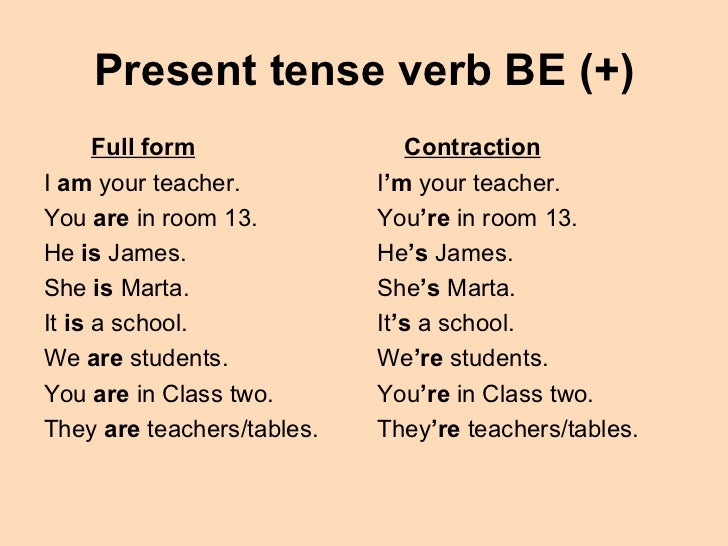
2 Present Tense Verb Be
Be present tense form
Be present tense form-Topic Verbs TO BE (present tense) level Beginner Choose the correct PRESENT TENSE form of the verb TO BE for each sentence 1 These _____ my friends are is 2 Robert _____ sick are is 3Progressive Forms of the verb "to be" The progressive form of the verb "to be" is "being" This means the action is ongoing (continuing) Examples The little boy is being naughty She was being rude, but then she apologized They are being tricked Perfect Forms of the verb "to be" The perfect form of the verb "to be" is "been"
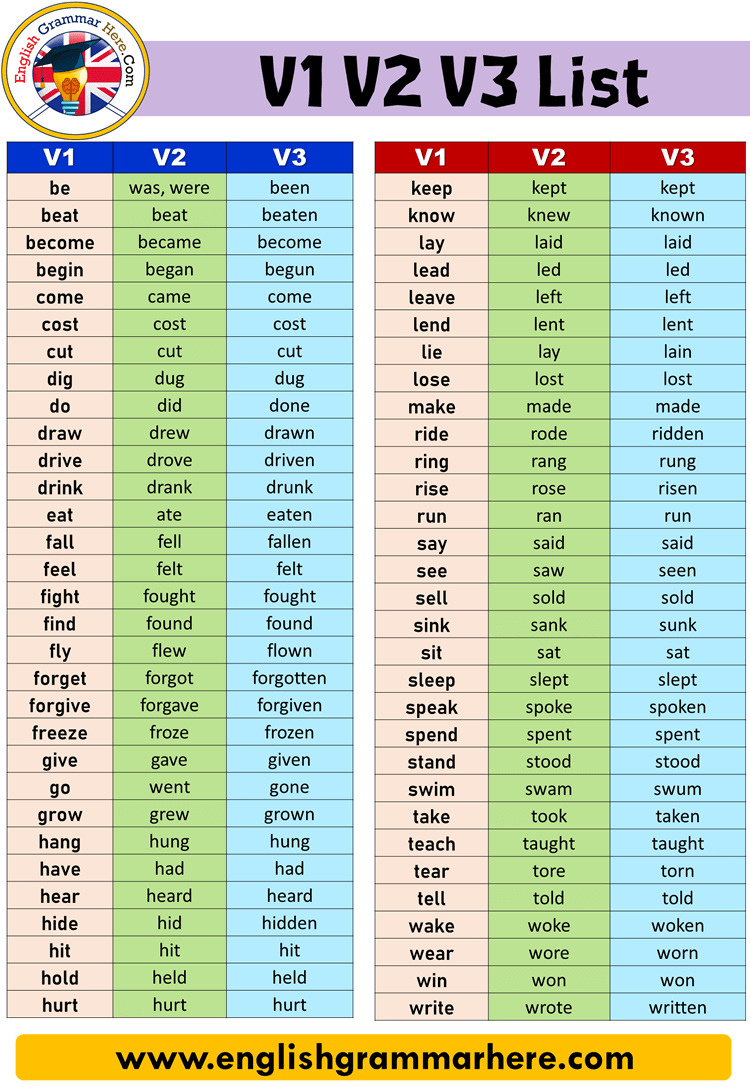



100 Words Past Present Future Tense English Grammar Here
This tense is used to express the action which started in the past and is still going on in the present Positive Sentences Rule Subject has/have been verb(first form) ing objectThe verb "be" is the most important verb to learn in English It's also the most complicated In the present tense it has three forms am, is, are In the past tense, it has two forms was and were The verb "be" is also used to make the passive voice Exercises for Blue Level – Lesson 1 Click here for a printable quizThe verb to be The verb to be is the most important verb in the English language It is difficult to use because it is an irregular verb in almost all of its forms In the simple present tense, to be is conjugated as follows
The present continuous (present progressive) tense is a way to convey any action or condition that is happening right now, frequently, and may be ongoingIt adds energy and action to writing, and its effect helps readers understand when the action is happening Imagine Aunt Christine has surprised her nephew Scott for his birthday and is going to take him out to his favoritePast participle form of the main verb The structure of the sentence Affirmative sentencesThe form of the verb to be is am (contracted to 'm), is ('s) and are ('re) in the present tense and was/were in the past To be is used as an auxiliary verb, to form continuous tenses and the passive, and as a main verb
Choose the correct form of "to be" in present tense or past tense Example My dog (be) is sick today (present tense) Example My dog (be) was sick last night (past tense) 1)) The clouds moved away, and the sun shone through The sky was full of pretty colors It (be) _____ beautifulThe simple present is a verb tense with two main uses We use the simple present tense when an action is happening right now, or when it happens regularly (or unceasingly, which is why it's sometimes called present indefinite) Depending on the person, the simple present tense is formed by using the root form or by adding ‑s or ‑es to the endWhere are you from?




The Simple Present Tense Useful Usage And Example Sentences Esl Forums




English Tenses Simple Present Tense First Second Third Person Singular Engli99
Present Simple for now For stative verbs, we can use the Present Simple to talk about now Stative verbs do not describe action They describe state, and are verbs such as like, sound, belong to, need, seem We can use these verbs with the Present Simple tense to talk about a situation at the present time, not generalUsing the verb 'to be' in the simple present tense;Present simple pdf exercises Exercise 1 Simple Present Tense Exercise 2 Simple Present Tense Exercise 3 Simple Present Tense Exercise 4 Review of the Simple Present Tense Exercise 5 Review of the Simple Present Tense Answer Keys worksheets Verb to be present handout Affirmative, negative, questions
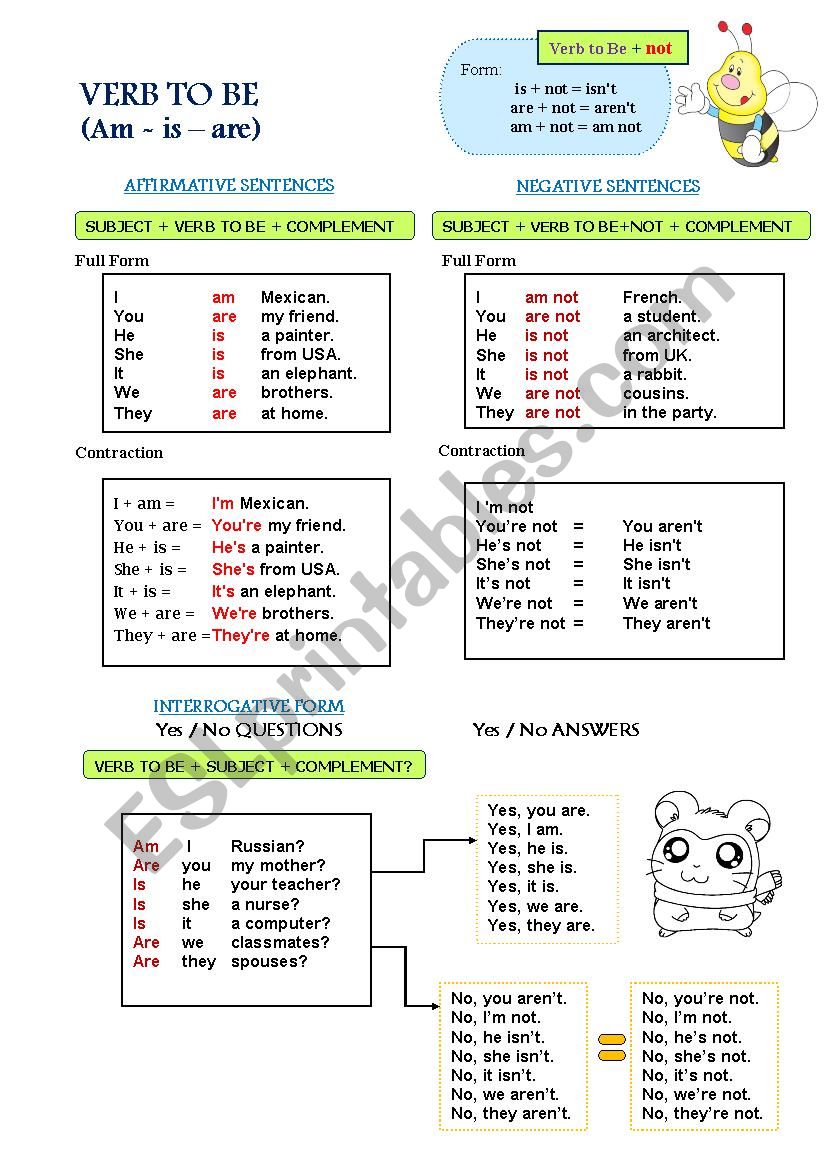



Present Tense Verb To Be Esl Worksheet By Lenylove




Present Simple Tense Simple Present Definition Rules And Useful Examples 7esl
Use simple present tense verbs in the base form of the verb Do not add any kind of suffix, like ''ed'' or ''ing'' Just like the previous example sentences, the base forms ofAm, is and are;In this course, "Word Forms and Simple Present Tense," you will learn about different word forms, like nouns, proper nouns, plural forms and singular forms You will learn when to use the articles "a" and "an" You will also learn about the BE verb in English, how to form it and when to use it




The Simple Present Tense Useful Usage And Example Sentences Esl Forums
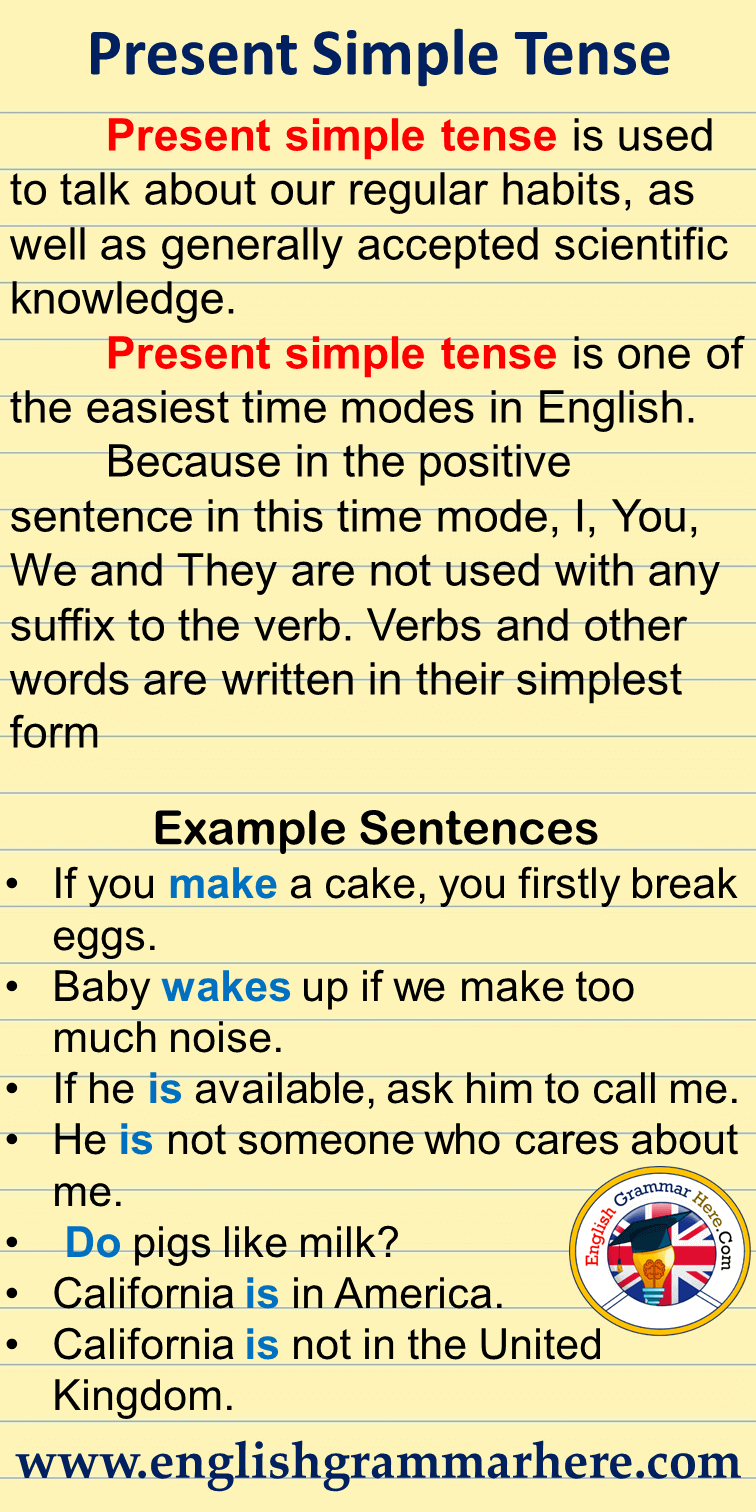



Present Simple Tense Notes And Example Sentences English Grammar Here
We form it using the verb 'to be' with the 'ing' form (present participle) of the main verb, as shown Examples of Present Tense Verbs in Sentences Joan "You look tiredThis worksheet focuses on verb to be (affirmative form) It includes five different exercises in which students are asked to fill in the blank spaces with is, am and are, choose the correctAll of these are common questions in English which use the verb to beOne of the first topics that you need to study when you learn English is the verb to be Today I will teach you how to use the verb to be in the present, past and future tense, or time
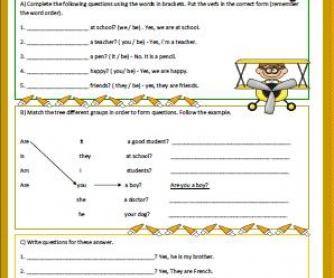



Verb To Be Present Tense Interrogative Form
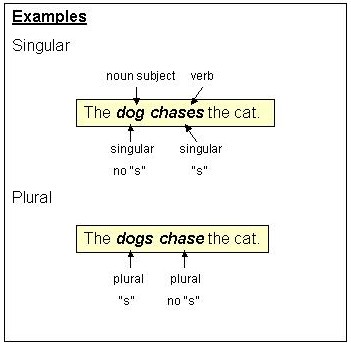



Subject Verb Agreement
Verb To Be Present, Past, & FutureHello, what is your name?The present simple tense varies it's form depending on whether it is being used with the third person singular, other verbs, or the verb to be It is used for repeated events, general facts, and with state verbsThe simple present of the verb to be This page will present the simple present of the verb to be its form;




Tenses Present Simple Present Continuous Grammar For Ts




Verb To Be Present Tense Kaycontinental English
The present tense is the verb tense used to describe a current event or state of being, but, oddly, the present tense can also describe past and future events The four present tenses are the simple present tense, the present progressive tense, the present perfect tense, and the present perfect progressive tense This page contains examples of the present tense and has anUse The present indicative of most verbs in modern English has the same form as the infinitive, except for the thirdperson singular form, which takes the ending esThe verb be has the forms am, is, areFor details, see English verbsFor the present subjunctive, see English subjunctive A number of multiword constructions exist to express the combinations of present tense with theImprove your language arts knowledge with free questions in "To be use the correct present tense form" and thousands of other language arts skills
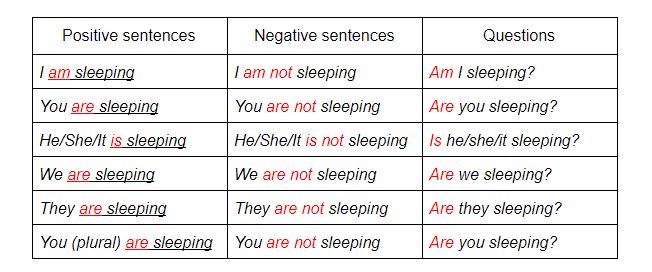



What Are The 4 Present Tenses In English And How Do You Use Them Oxford House Barcelona
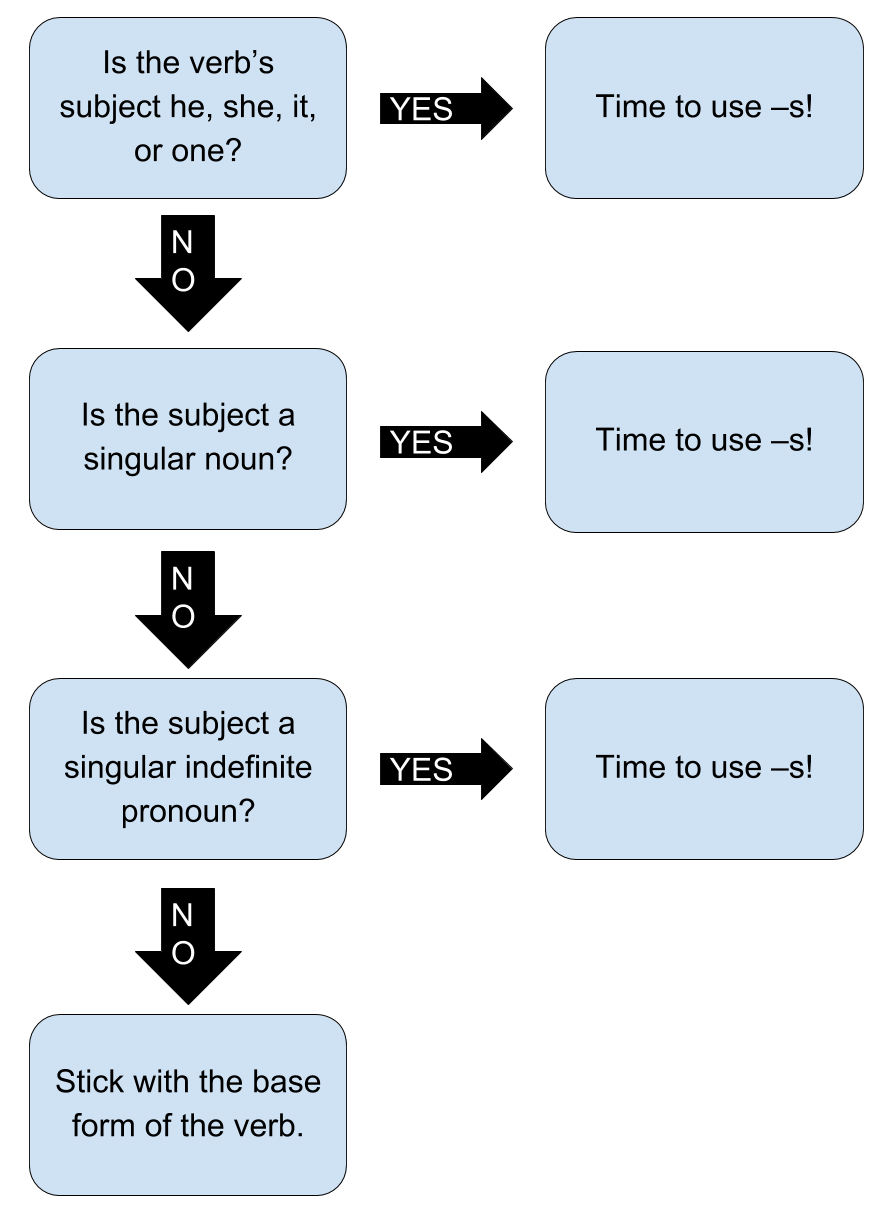



Should You Use S Or Es For A Present Tense Verb About Writing A Guide
POSITIVE ( AFFIRMATIVE ) FORM () Subject TO BE ( am / is / are ) NEGATIVE FORM () Subject TO BE ( am / is / are) NOT QUESTION FORM (?) TOVerb To Be Interrogative Form Worksheet;Regular Present Indicative Forms Below you'll find instructions for forming regular verbs in the present tense, including the endings you need to know for ar, er, and ir verbs Verbs that End in ar To conjugate an ar verb, remove the infinitive ending (ar) and add the ending that matches the subjectYou can find these endings in the table below
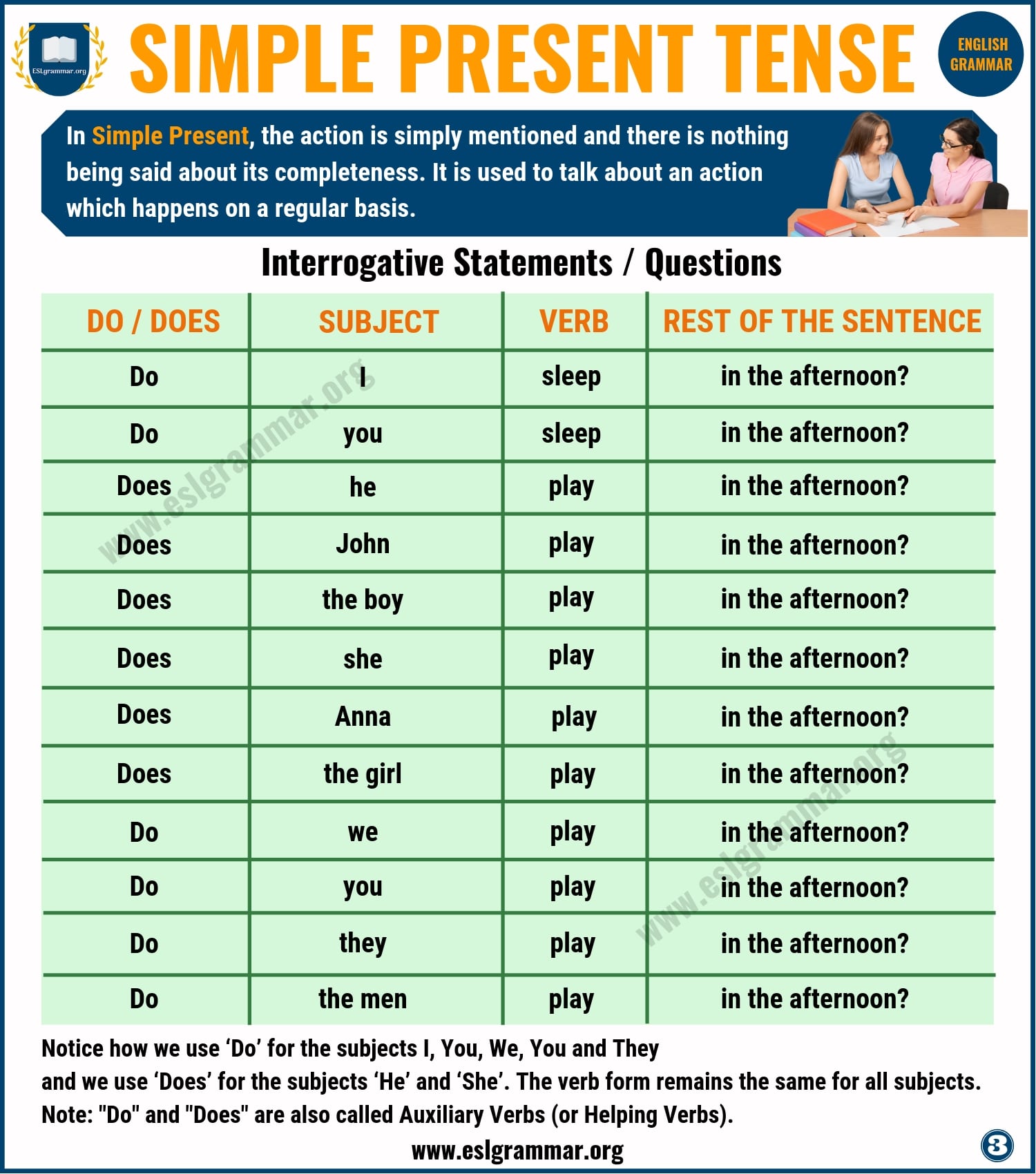



Simple Present Tense Definition And Useful Examples Esl Grammar
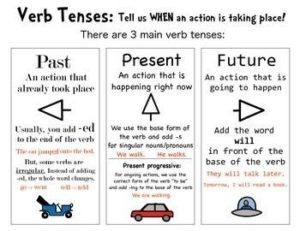



Present Tense Types Of Present Tense With Examples
The verb be has irregular present tense forms In the present simple, the auxiliaries do and does are not used in the negative and interrogative if the main verb is be Affirmative Present perfect tense is also used for actions completed in the recent past, not very long time ago The present perfect tense form of a verb has two parts The present tense form of 'to be' – known as helping verb or auxillary verb;2 days ago Continuous tenses of main verbs use the appropriate form of be, present or past, followed by the present participle (or ing form) See The present continuous tense and Form of adverbs and The present perfect continuous tense The passive form of a main verb uses the appropriate form of be followed by the past participle




Tenses Examples 58 Sentences Of All Tenses Examplanning




Simple Present Tense Affirmative And Negative Forms English Esl Worksheets For Distance Learning And Physical Classrooms
They are made using wh words such as what, where, when, why, which, who, how, how many, how much To make re the rest of the sentenceIt is formed from the present tense of the auxiliary verb 'to be' and the present participle of the verb 'ing' For example, The noise is beginning to give me a headacheAffirmative sentence Negative sentence Question I, he, she, it, we, you, they I can play tennis I cannot play tennis Can I play tennis?




Identifying The Sentence In Present Tense Form Worksheet Turtle Diary
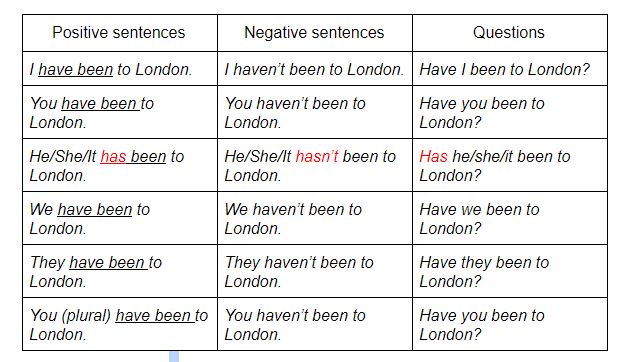



What Are The 4 Present Tenses In English And How Do You Use Them Oxford House Barcelona
Simple present tense with 'be' The verb 'be' is different from the other verbs in this tense Let's look at 'be' first Here's the positive form (positive means a normal sentence, not a negative or a question This is sometimes called 'affirmative') Click here to practise making the positive with 'be' Next, here's the negative It's very easyWe can subtitute don't ( can't) for do not ( cannot ) Modals have the same form every time regardless the subjectUnit 1 Present Tenses A Put in the present continuous form of the verb in brackets 1 Please be quiet I _____ (try) to read my book
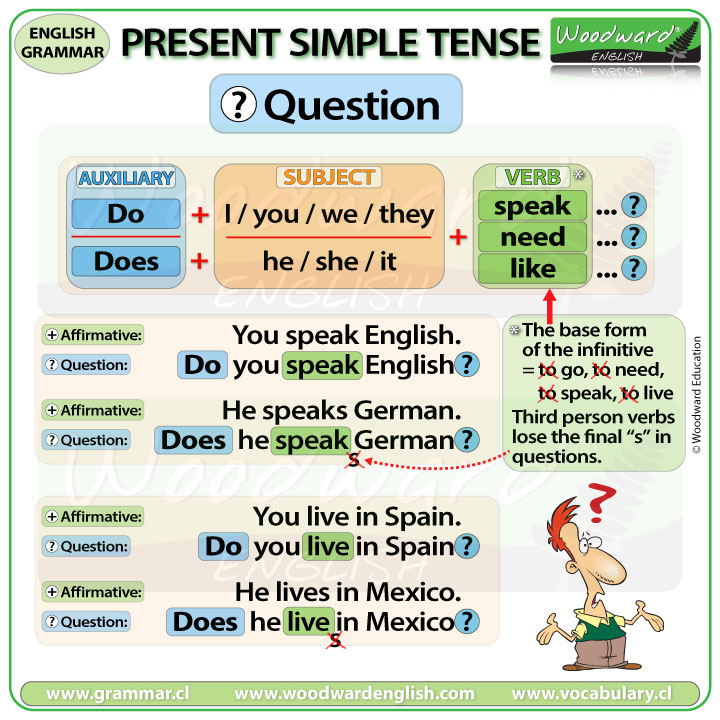



Present Simple Tense In English Woodward English




Am Is Are Simple Present Form Of To Be Worksheet
Present Tense of Verbs How to Form Every oneword verb in the English language has a oneword present tense And that one word is the same as the infinitive for all persons and all numbers except thirdperson singular Except for thirdperson singular, the presenttense verbs use the same word Example Name of Present TenseHow old are you?To be can also be used in other ways in the present and past tense, such as The comparative or superlative form to make a comparison between people, places, objects, and ideas Used as such, the In the modal form, also known as the present possibility, indicating that
/GettyImages-1054630262-43409feba03a4194bacc8e210be19e32.jpg)



Simple Past Tense Definition And Examples
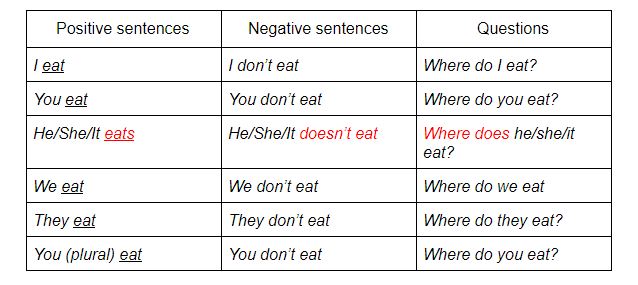



What Are The 4 Present Tenses In English And How Do You Use Them Oxford House Barcelona
Present Tense Formsing Past Past Participle be am, are, is being was, were been An independent clause needs a complete verb Verb forms such as the ing form and the past participle are not complete because they do not show tense They need auxiliary The present perfect continuous tense (also known as the present perfect progressive tense) shows that something started in the past and is continuing at the present time The present perfect continuous is formed using the construction has/have been, and the present participle (root ing)About Press Copyright Contact us Creators Advertise Developers Terms Privacy Policy & Safety How works Test new features Press Copyright Contact us Creators




Present Simple Tense In English Grammar Lesson Youtube
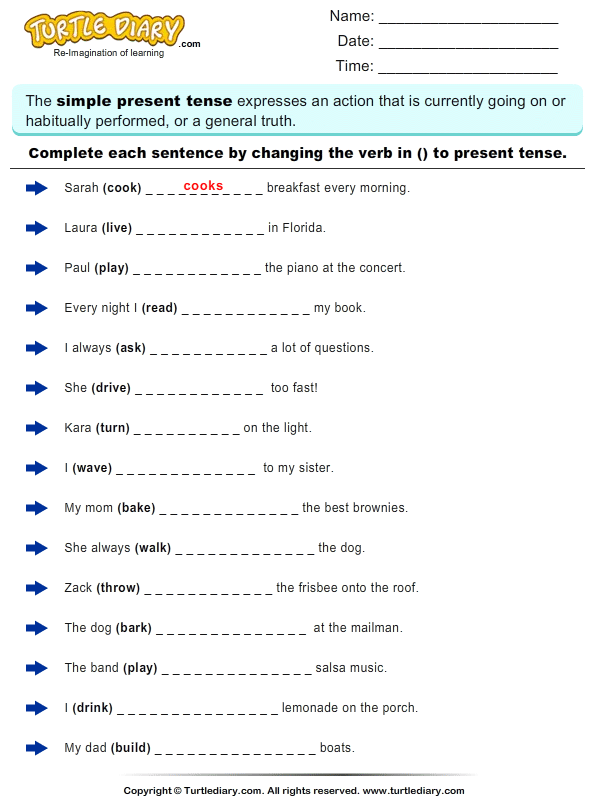



Complete The Sentence By Changing The Verbs To Present Tense Form Worksheet Turtle Diary
The present continuous (also called the present progressive) is formed with am / is / are (the present tense forms of be) the present participle ing form of the verbVerb to Be Present Tense Negative Form;Main verb be subject Here are the forms of the main verb be that we use to construct the tenses base past simple past participle present participle ing present simple be was, were




Present Simple Tense In English Grammar Lesson




Simple Present Tense Form Function Susanenguaeu
The verb '' TO BE ''has three forms in the present;
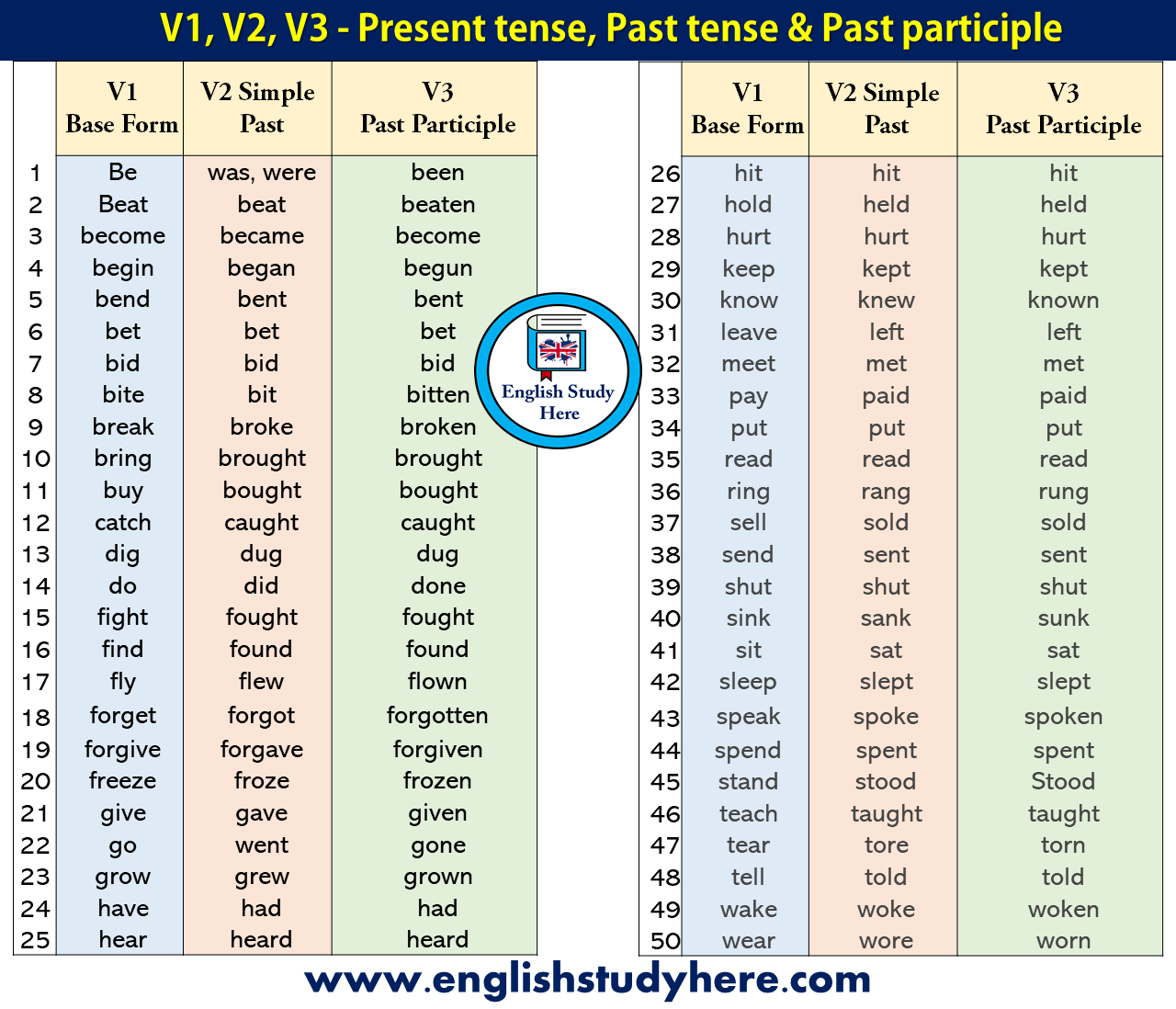



50 Examples Of Present Tense Past Tense And Past Participle English Study Here




English Learning Simple Present Tense
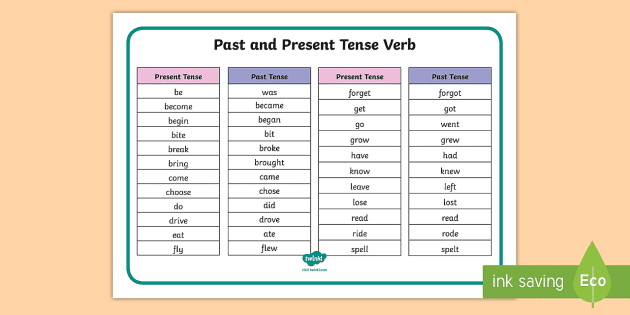



Past And Present Tense Verb Word Mat Primary Resources




Use The Present Tense Form Of The Verb In Parentheses That Agree W
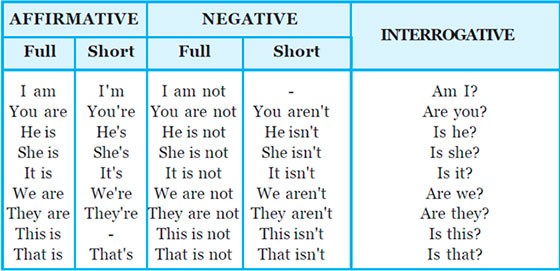



How To Use The Verb To Be In Present Tense English Lessons




Present Tense And Past Tense Forms Of To Be Download Table
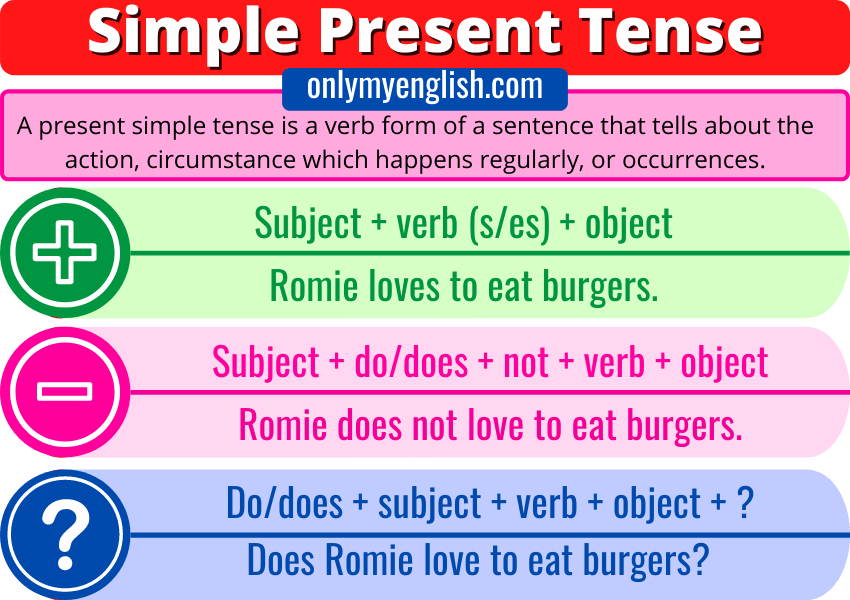



Present Simple Tense Definition Examples Rules Onlymyenglish



3



Simple Present Tense With To Be English Study Page




V1 V2 V3 Present Tense Past Tense Past Participle English Grammar Here




Past Tense Of Be Past Participle Form Of Be Be Was Were Been V1 V2 V3 Lessons For English




Simple Present Tense Youtube




Simple Present Tense Form English Pdf Docs Simple Present Tense Grammar And Vocabulary Tenses




Excellence English Language Learning Centre Sdn Bhd Grammar Day Present Perfect Tense It Is Formed From The Present Tense Of The Verb Have And The Past Participle Of A Verb Regular




2 Present Tense Verb Be
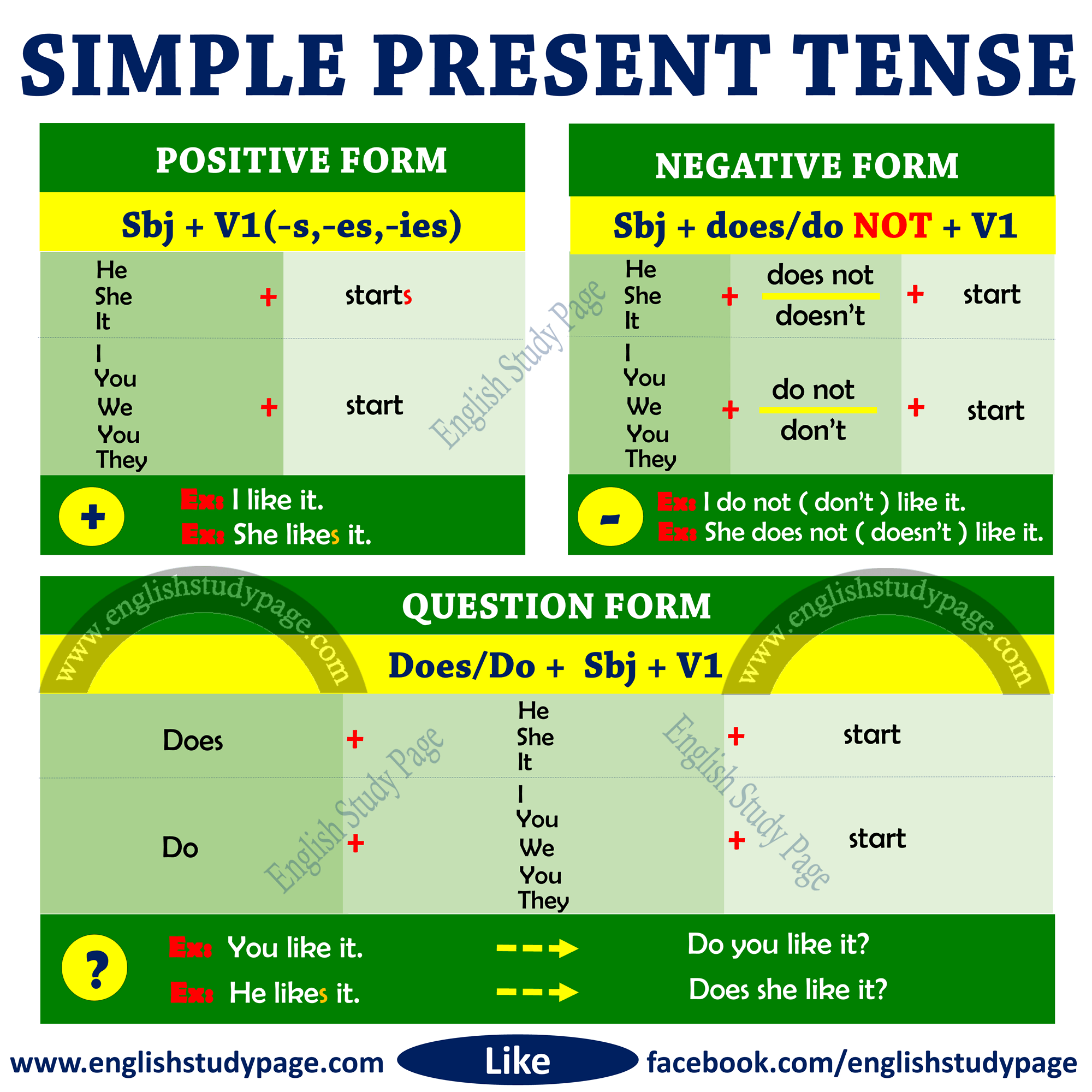



Structure Of Simple Present Tense English Study Page
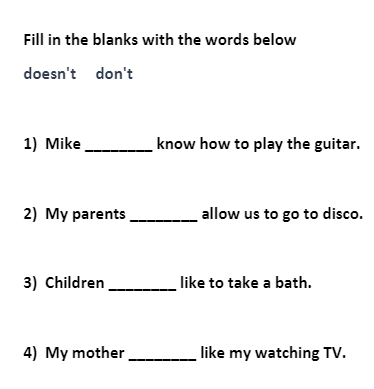



Simple Present Tense Negative Form Fill In Blanks Exercise No 21 Englishpedia Net
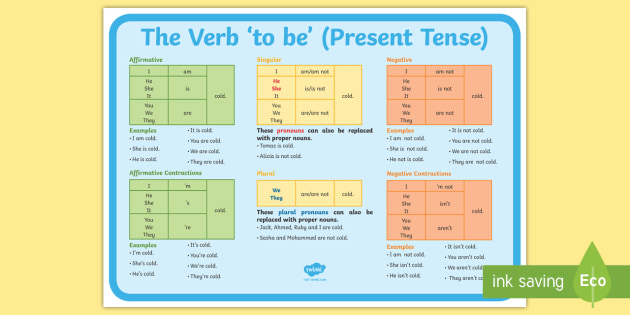



The Verb To Be Present Tense Poster




Common Verbs Irregular In The Present Tense



Slajd 19 Give The Correct Form Of The Following Verbs Present Tense 1 I Went To The Mall




Simple Present Tense Form And Use English Esl Powerpoints For Distance Learning And Physical Classrooms
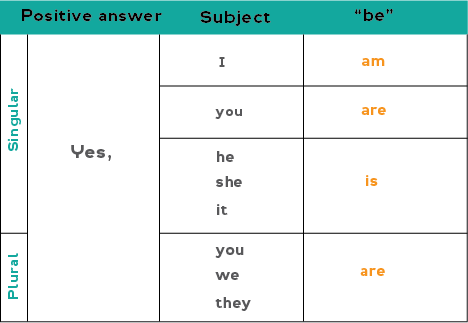



All About The Present Simple Tense



1




3 Example Of Nominal Simple Present Tense Source Download Scientific Diagram
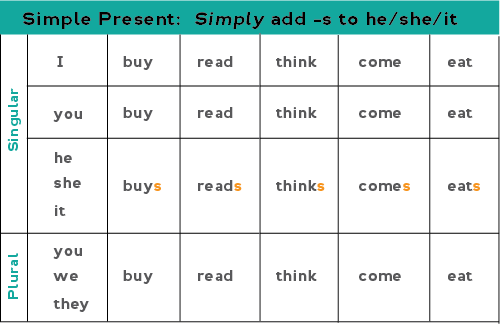



All About The Present Simple Tense
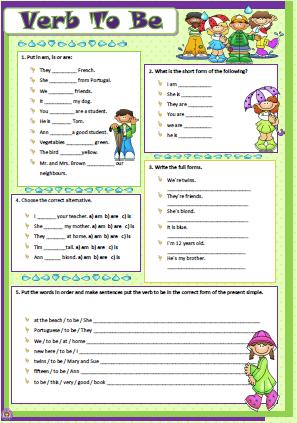



Verb To Be Present Tense Affirmative Form




Past Present Tense Practice Past And Present Verb Forms Distance Learning



1




100 Words Past Present Future Tense English Grammar Here




16 Tenses In English Grammar Formula And Examples Examplanning




The Simple Present Tense Affirmative And Negative Form Worksheet
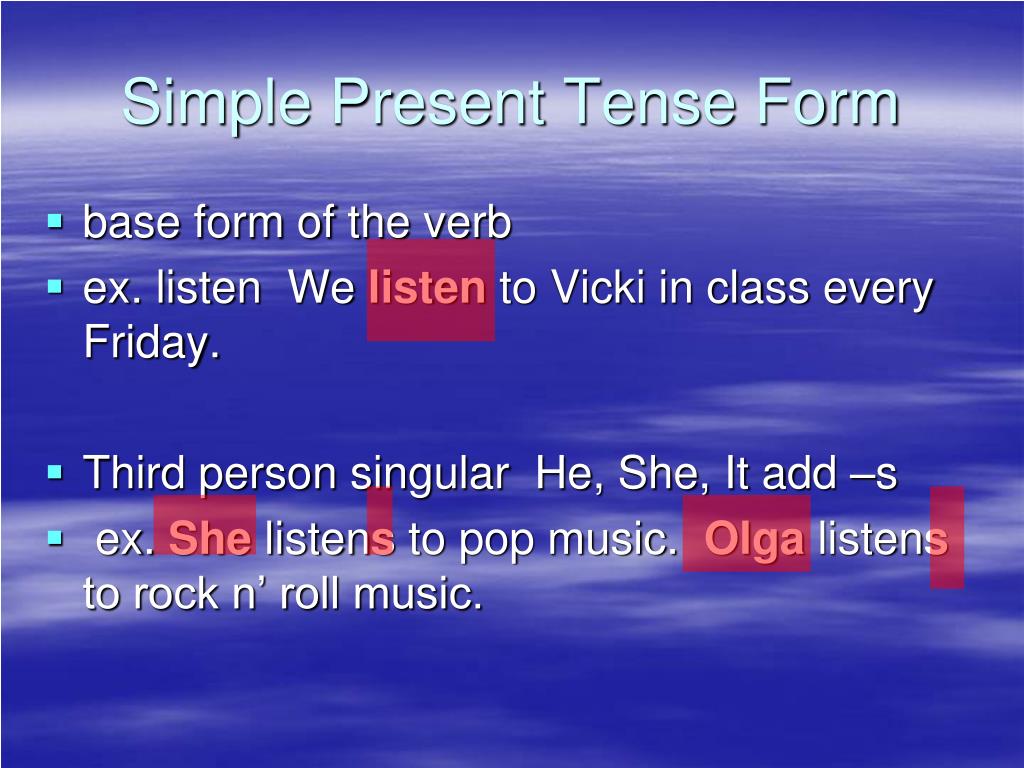



Ppt Simple Present Tense Form Powerpoint Presentation Free Download Id




Regular Verbs In The Present Tense



1




Present Tense What Is The Present Tense
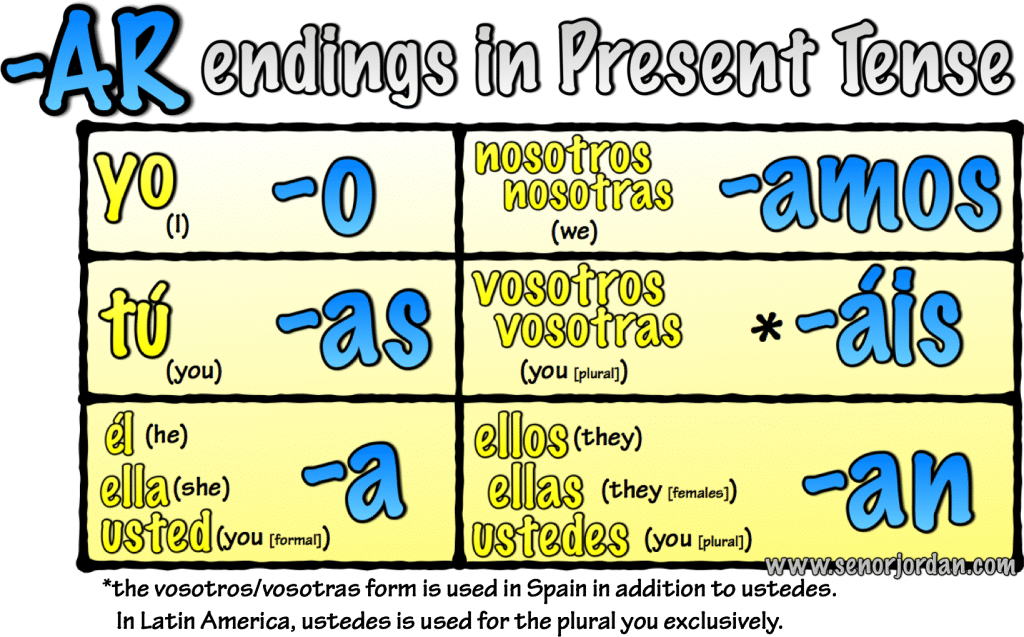



Spanish Verbs With Ar Learn To Form Them In The Present Tense




Simple Present Tense Form Materials For Learning English




Simple Verb Tenses Simple Tenses 1 Simple Present




Solved Fill N The Blanks With The Present Tense Form Of Chegg Com
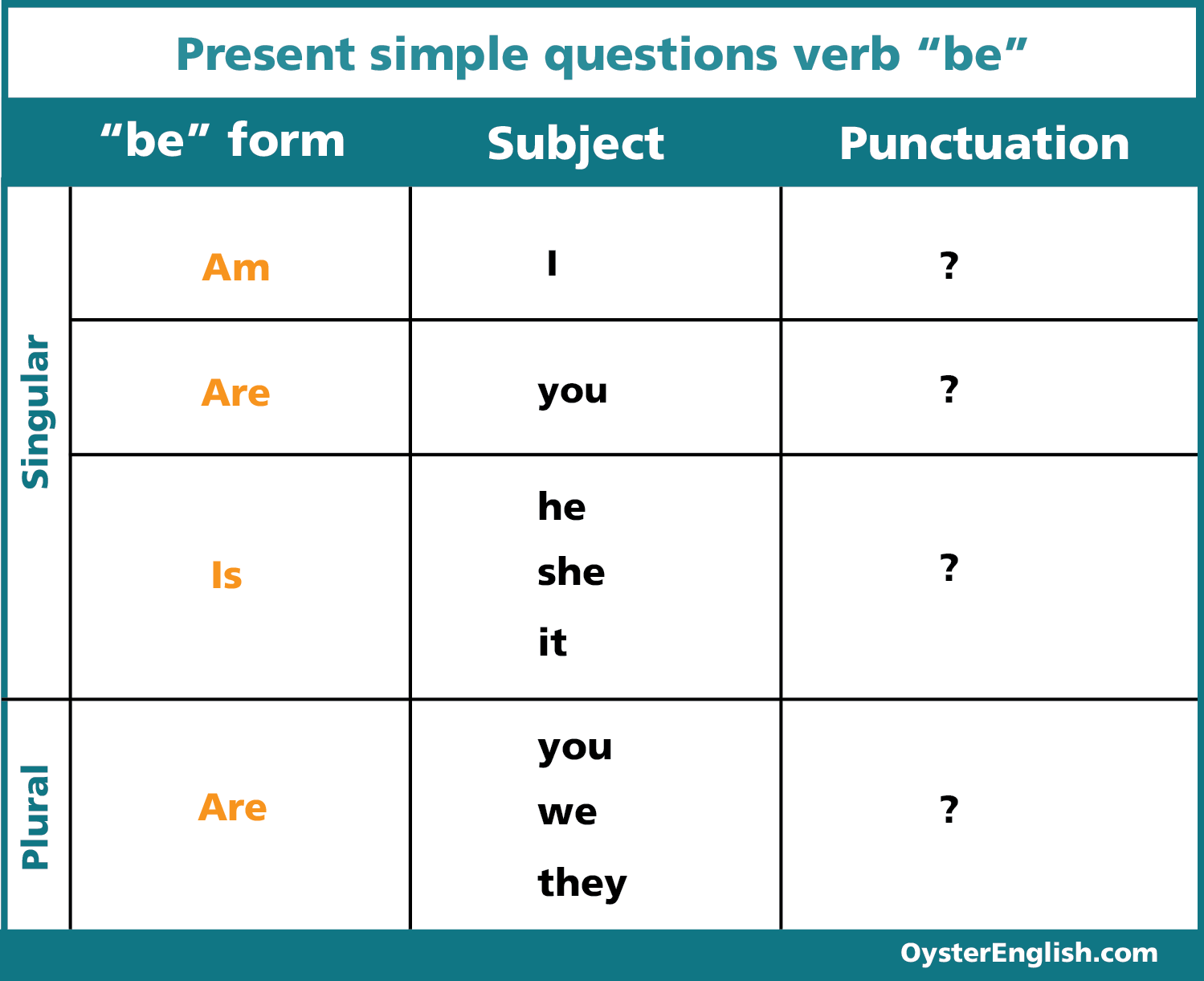



All About The Present Simple Tense



Regular Verbs Present Tense International Studies



Category Present Tense International Studies
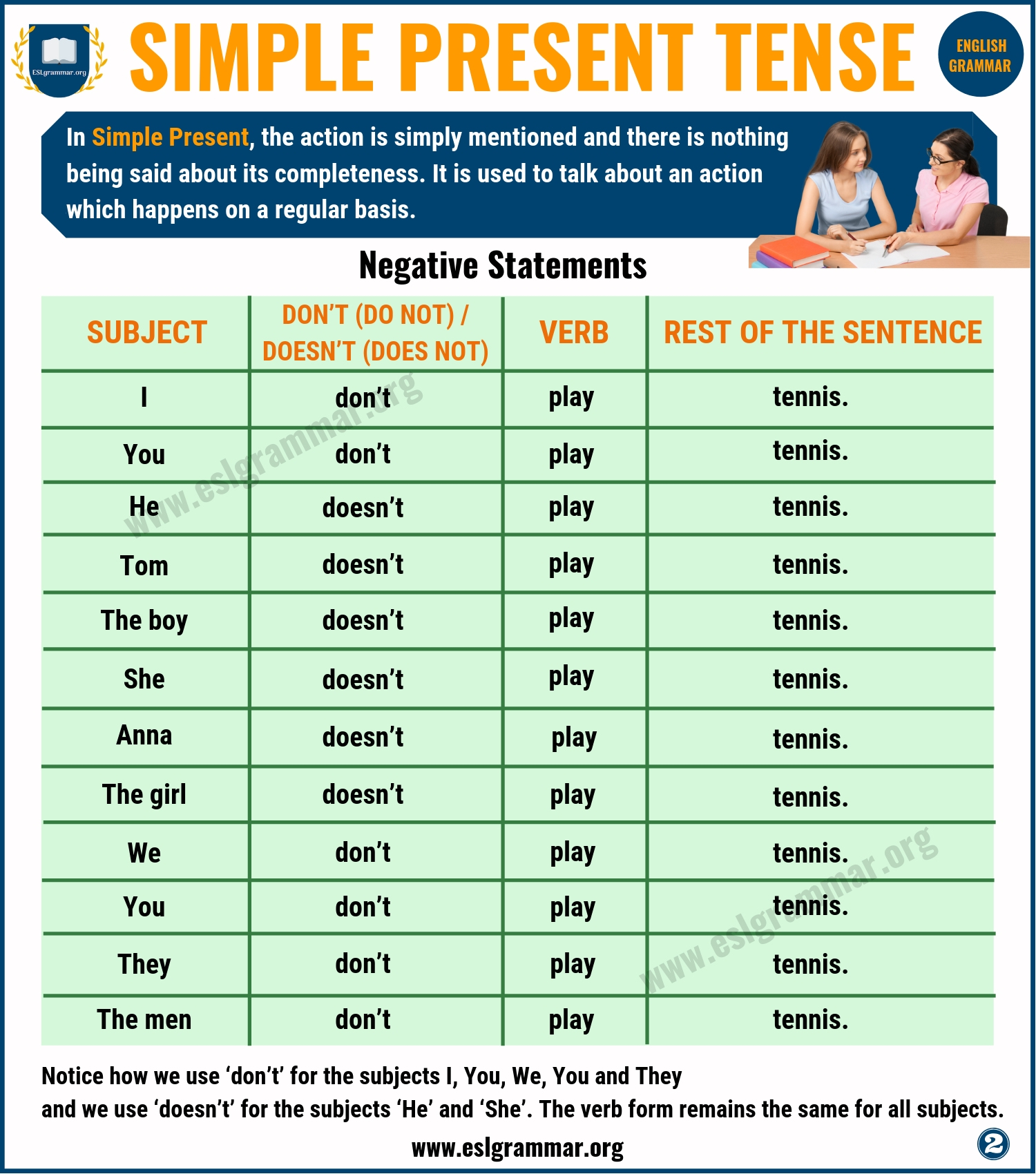



Simple Present Tense Definition And Useful Examples Esl Grammar




Form And Basic Meaning Of The Simple Present Tense Online Presentation




Simple Present Tense Plural Form Archives English Study Here




Present Tense Verb Sort Worksheet Education Com
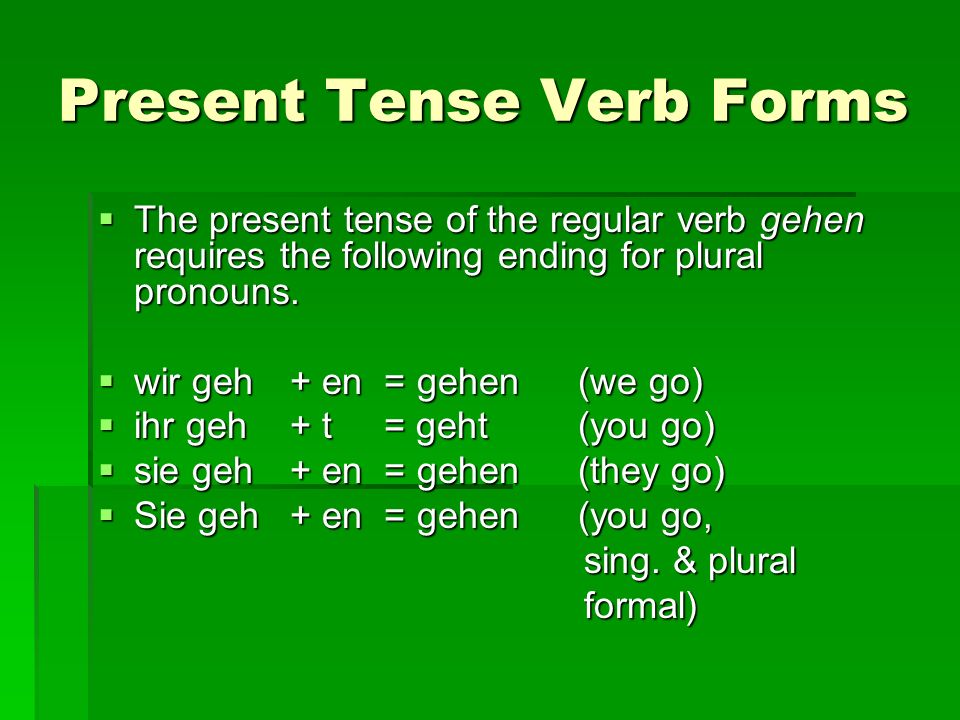



Present Tense Verb Forms Ppt Video Online Download
(125).jpg)



Soal Simple Present Tense Proprofs Quiz




The Negative Form Of The Simple Present Tense Worksheet
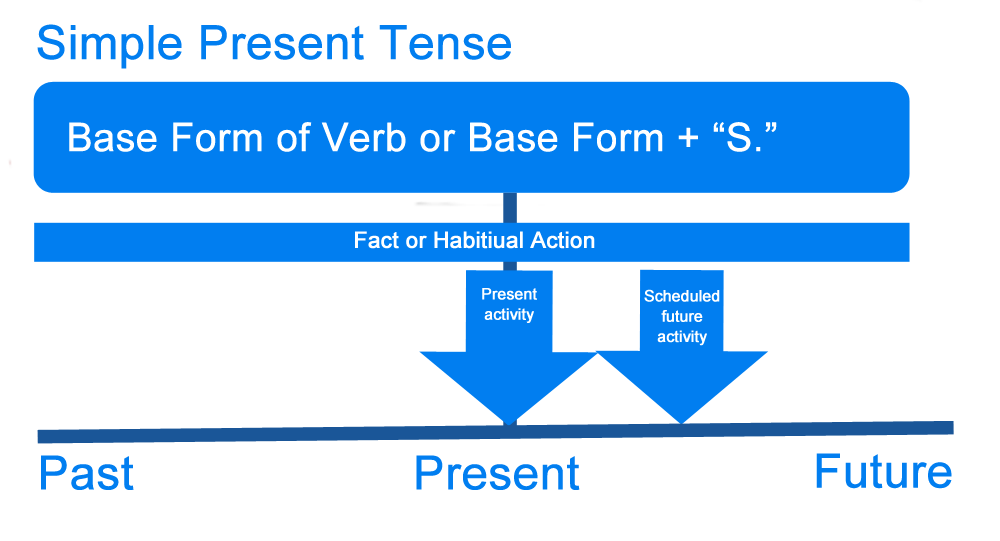



What Is Present Tense Definition Examples Of English Present Tense Verbs Writing Explained
/ThoughtCoChalkboard-5b2a9642fa6bcc0036305aa9.png)



The Present And Past Forms Of The Verb To Be
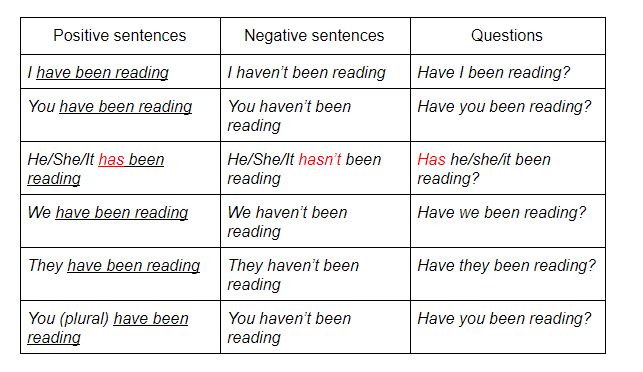



What Are The 4 Present Tenses In English And How Do You Use Them Oxford House Barcelona



Regular Present Tense Srjuanijo Com




22 Present Tense And Past Tense Words Ideas Past Tense Tenses Words




Present Simple Tense Detailed Expression Tenses Simple Past Tense Simple Present Tense




Present Tense Ar Er And Ir Verb Ending Conjugation Practice Diagram Quizlet
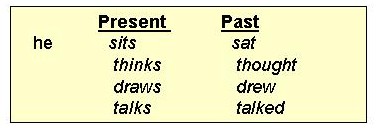



The Verb Expansion Rule Provides A Formula That Covers Every Predicate Verb Possibility In The English Language




Simple Present Tense English Folder
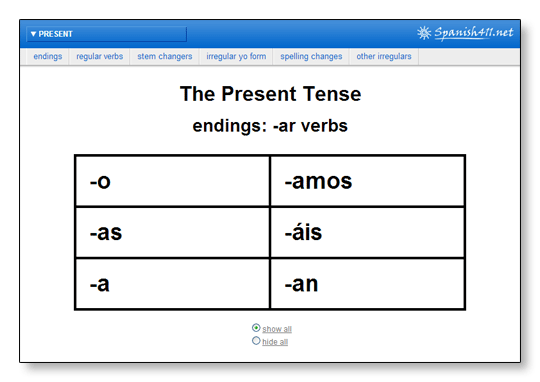



The Present Tense Part 2 Spanish411




To Be Verbs Completely Explained Fls Online Fls Online
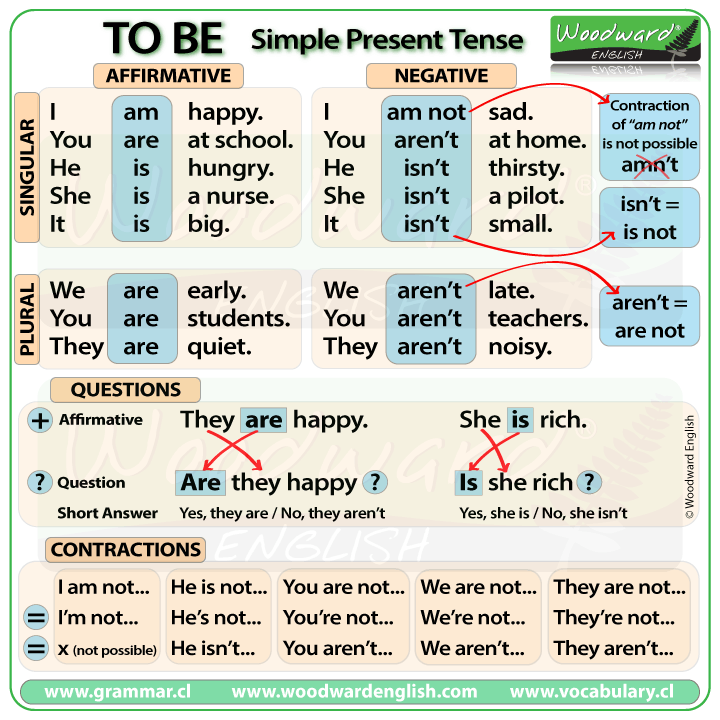



To Be In Present Tense English Grammar




Passe Compose A Cup Of French




Present Tense Verbs Tenses The Tenses Of A Verb Are The Forms That Help Show Time There Are Six Tenses In English Present Past Future Present Perfect Ppt Download




Quia Eee 4 All Present Tense Regular Verbs




Forming Verb Tenses
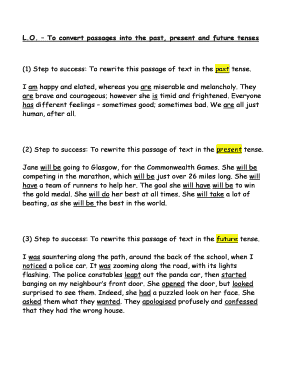



Change Present Tense To Past Tense Paragraph Online Converter Fill Online Printable Fillable Blank Pdffiller
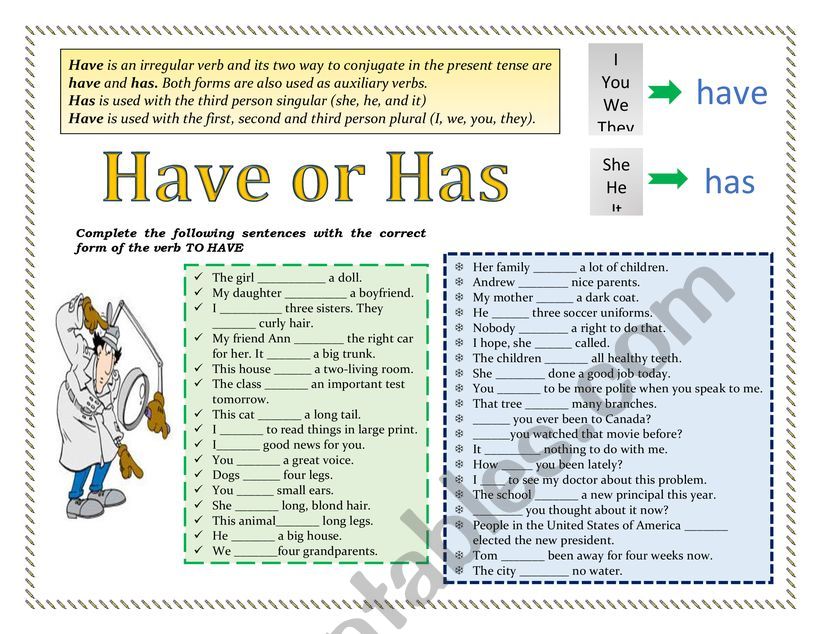



Have Or Has Present Tense Form Esl Worksheet By Teresitasepa
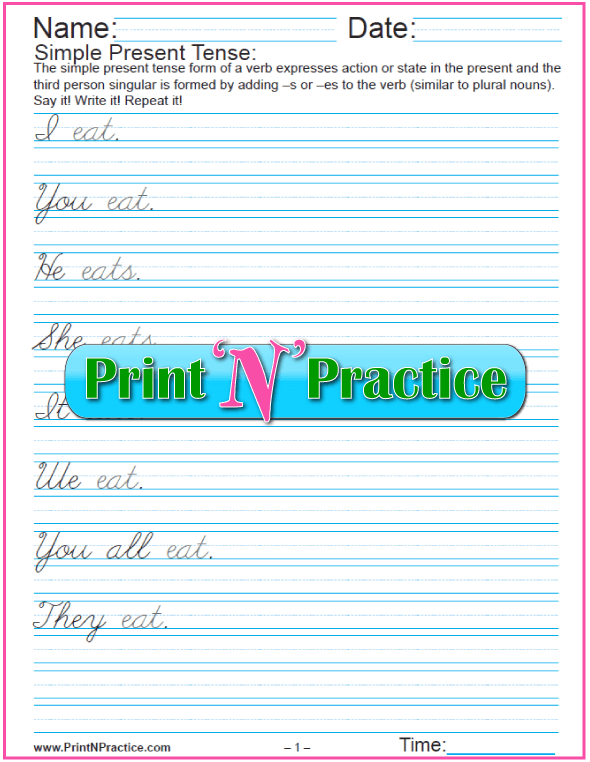



Verb Tenses Worksheets Past Present Future Simple Perfect Etc




Third Person Singular Verbs List With Examples Englishbix




Poster Present Tense English Esl Worksheets For Distance Learning And Physical Classrooms
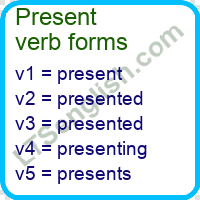



Present Verb Forms Learn English Free Online Ltsenglish Com
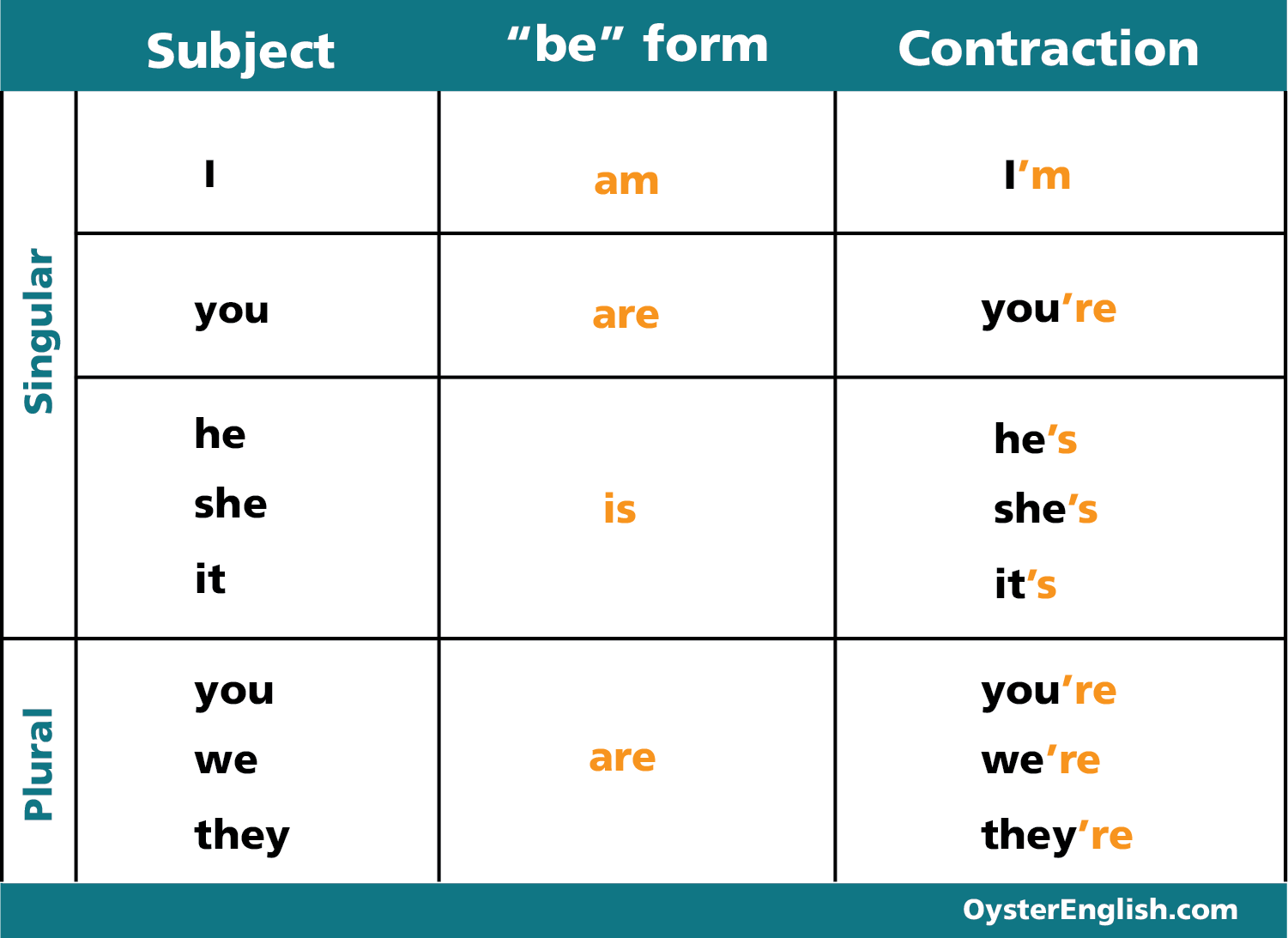



All About The Present Simple Tense
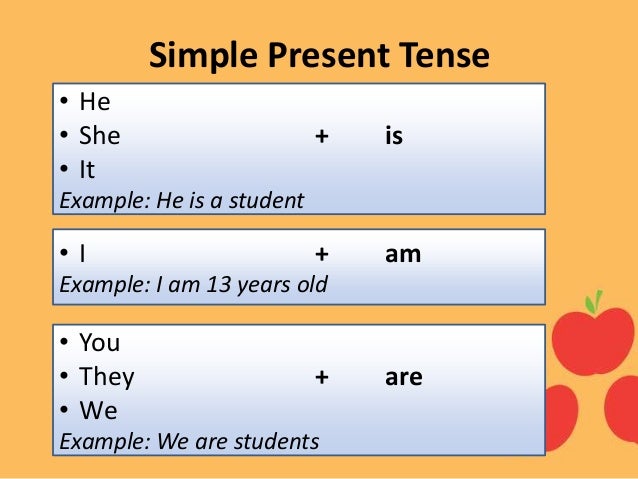



Simple Present Tense Positive Form




Verb Be Present Tense Tefllessons Com Esl Worksheets Handouts




To Be Past Present Tense Affirmative Sentences Youtube




Convert Present Tense Into Past Tense Worksheets Your Home Teacher




Simple Present Tense In English English Study Here
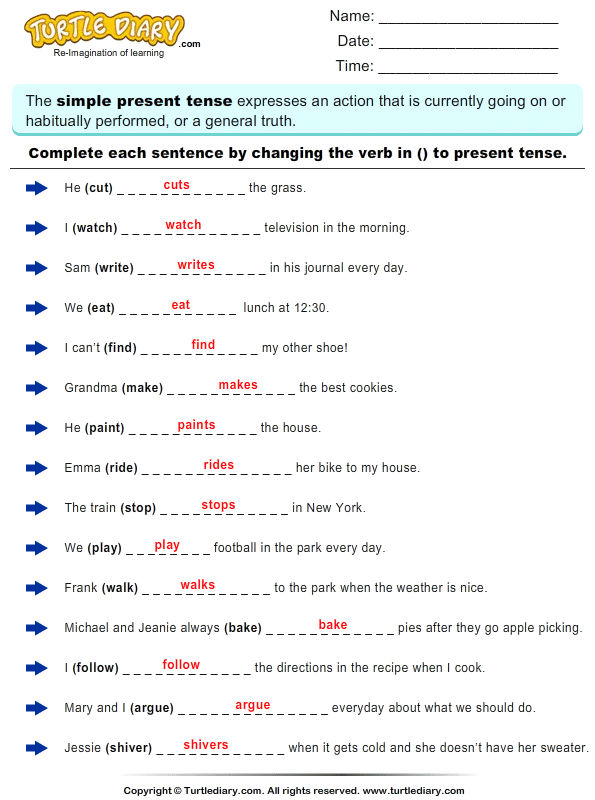



Complete Sentences By Writing Present Tense Form Of Verb Worksheet Turtle Diary



0 件のコメント:
コメントを投稿